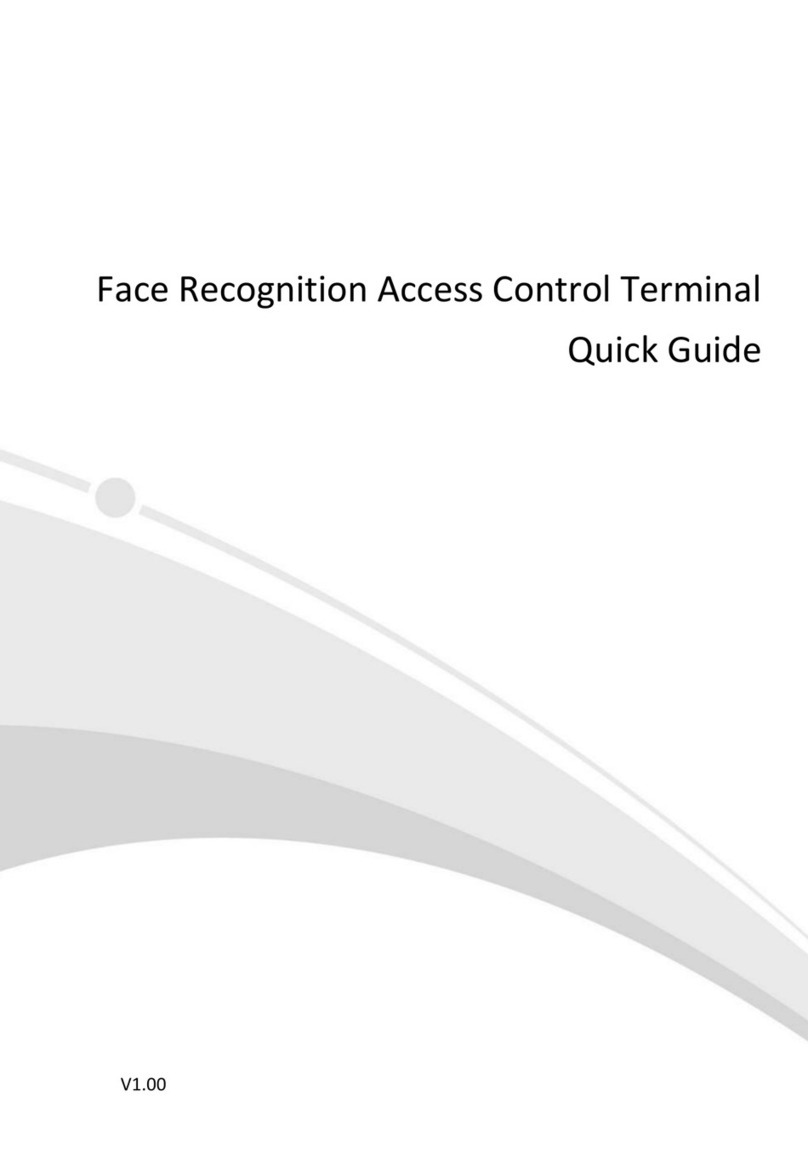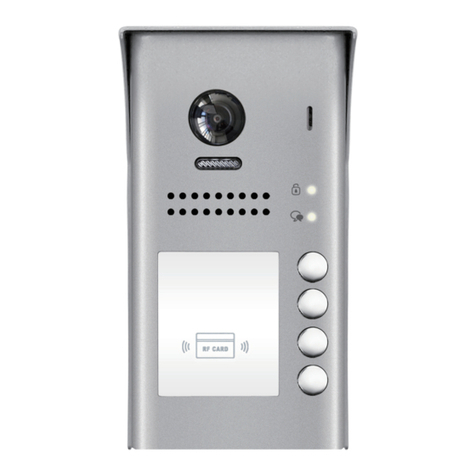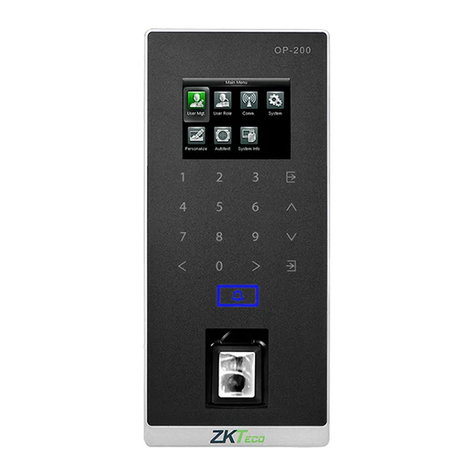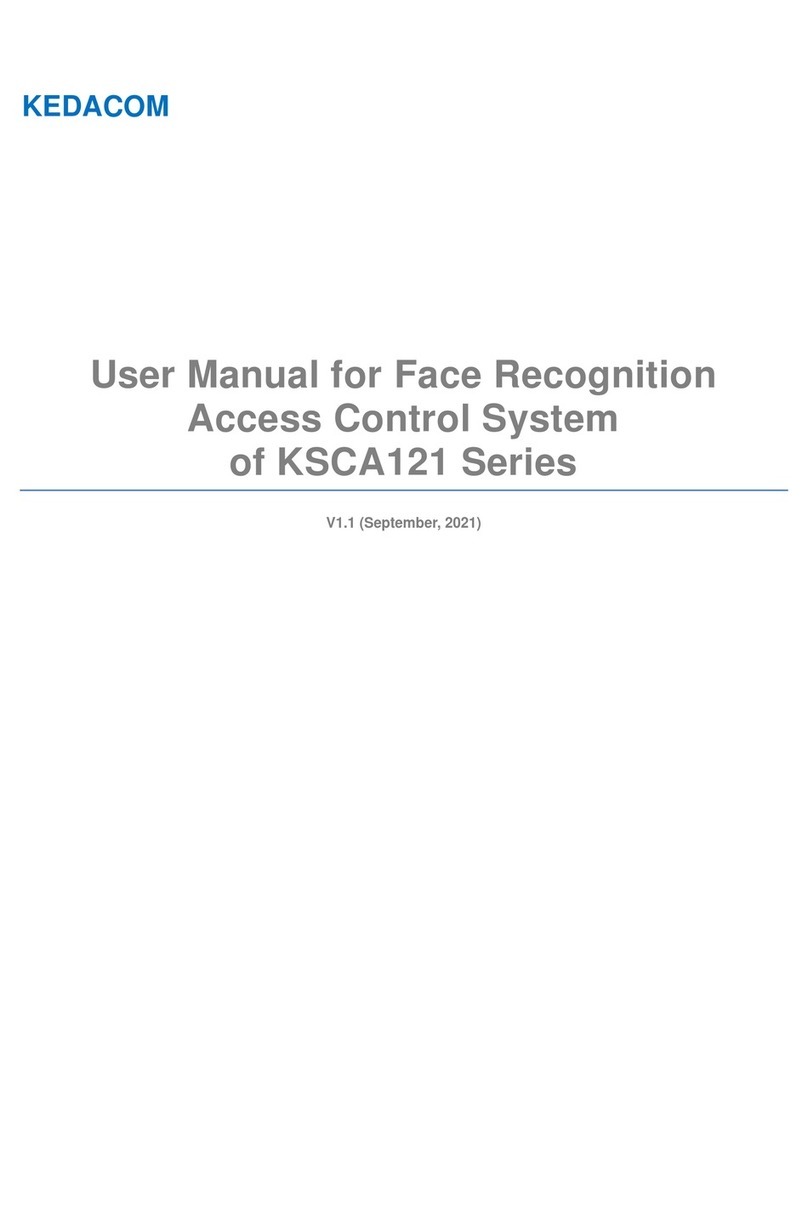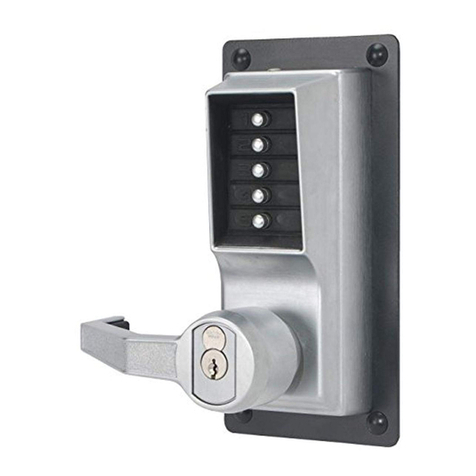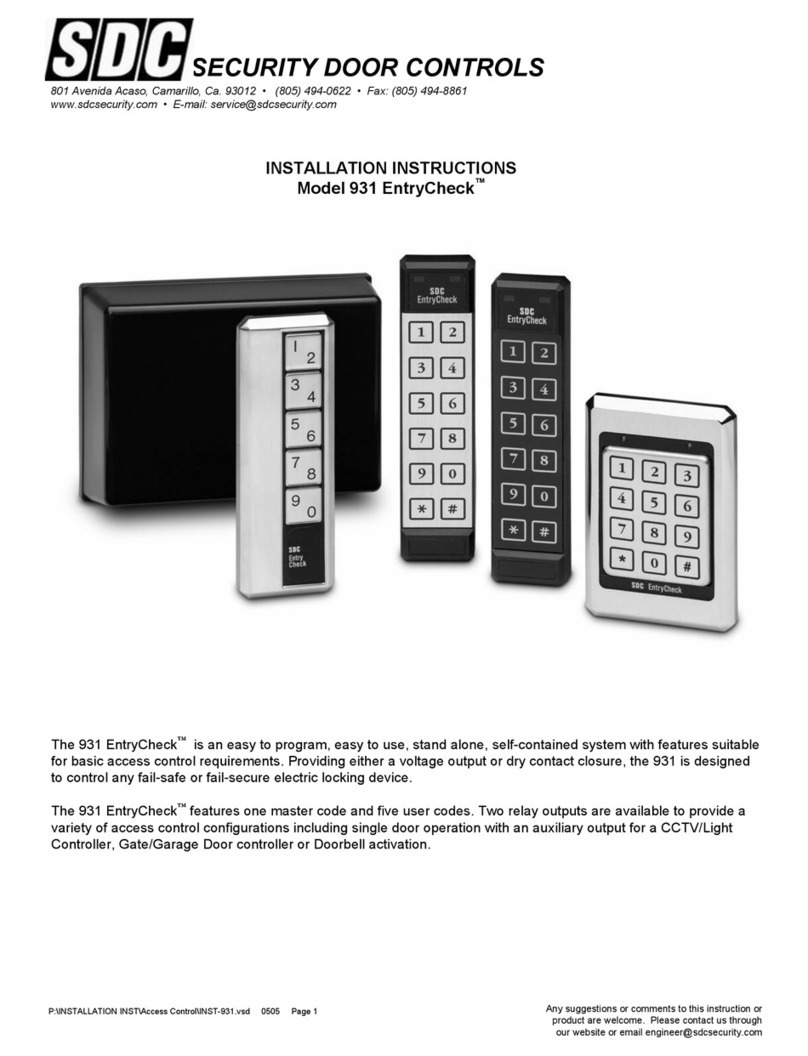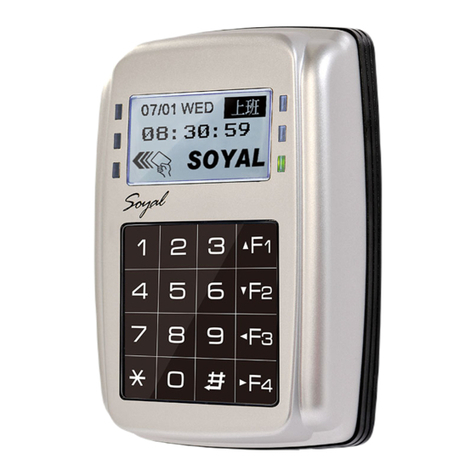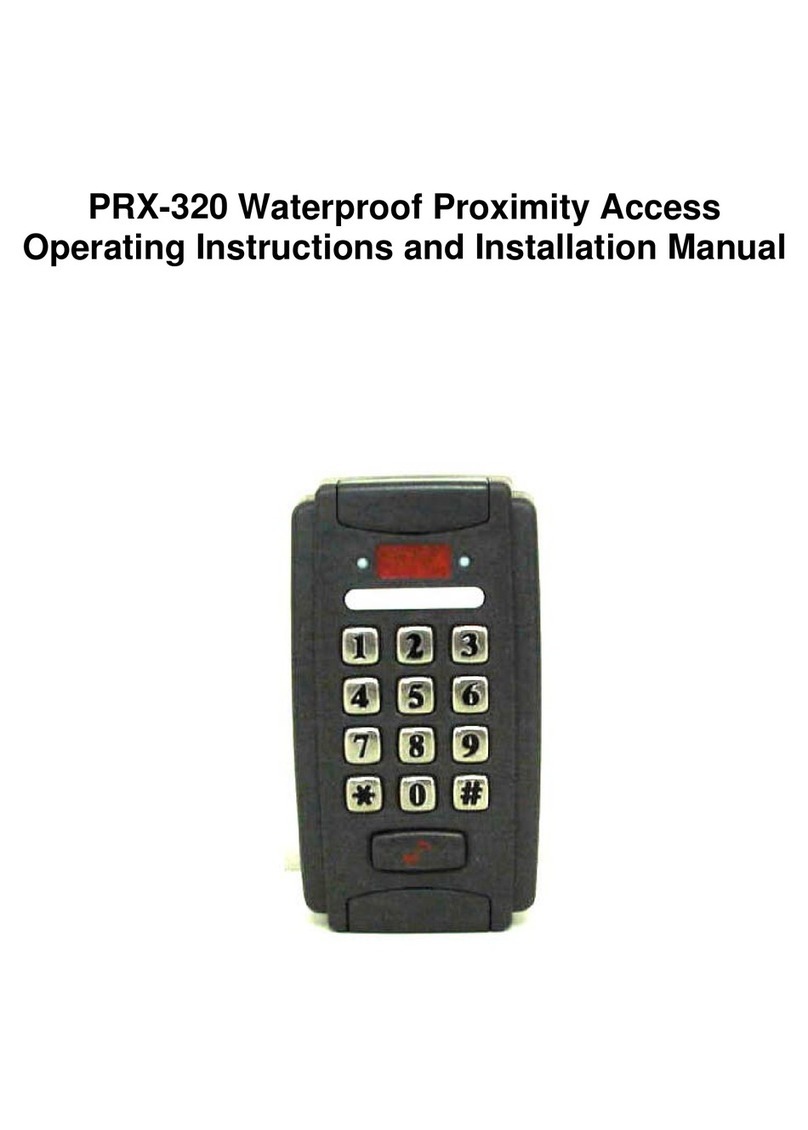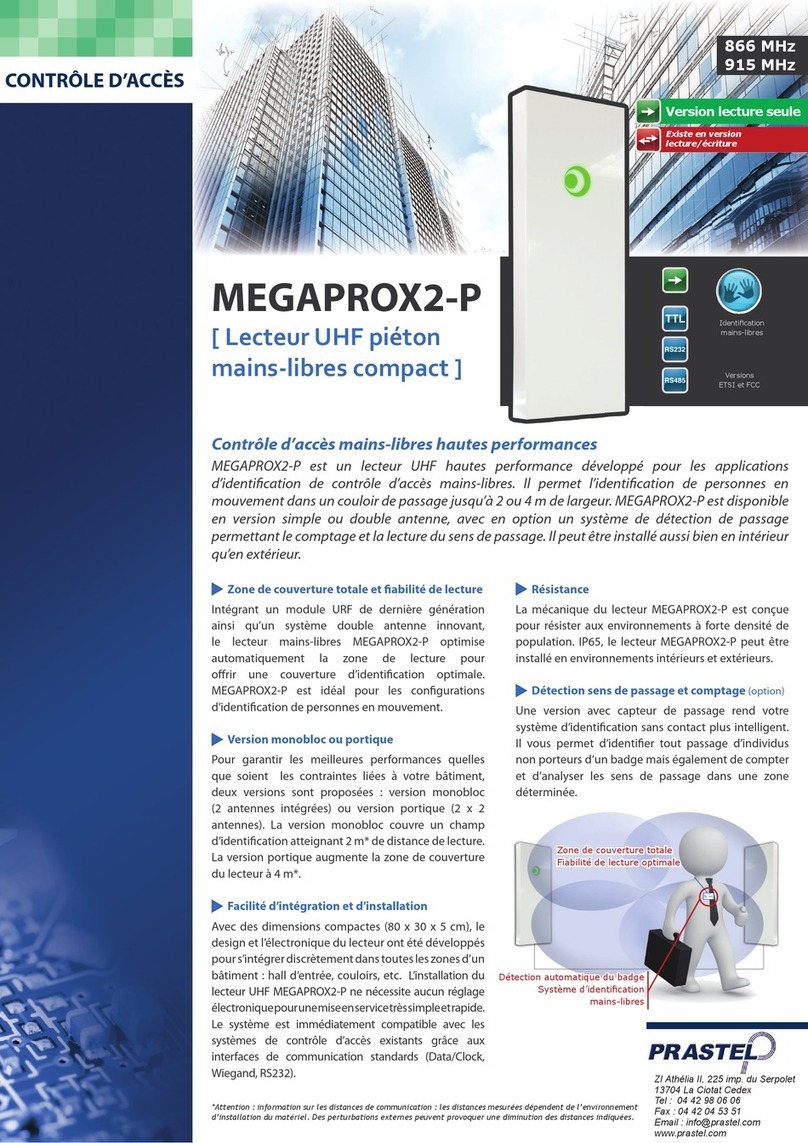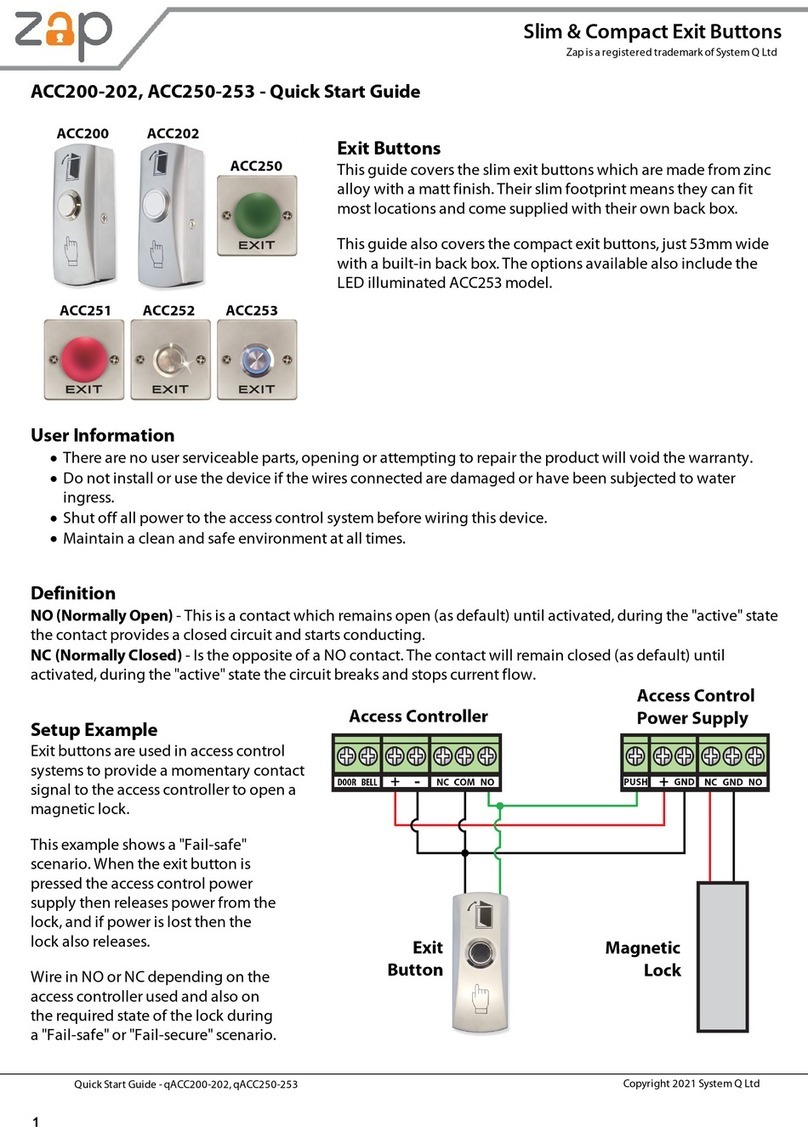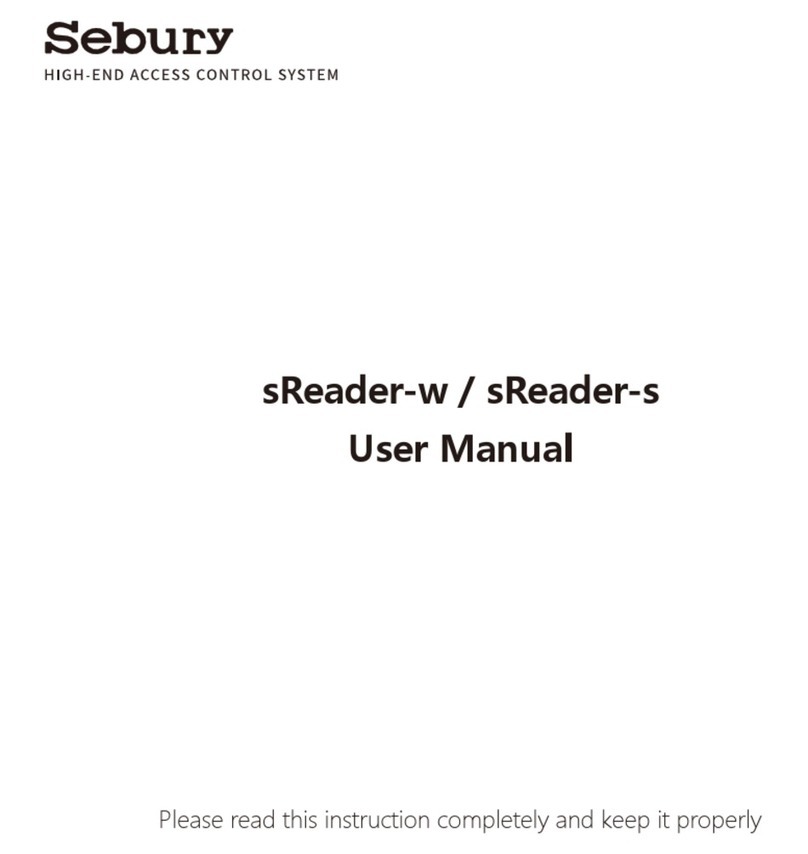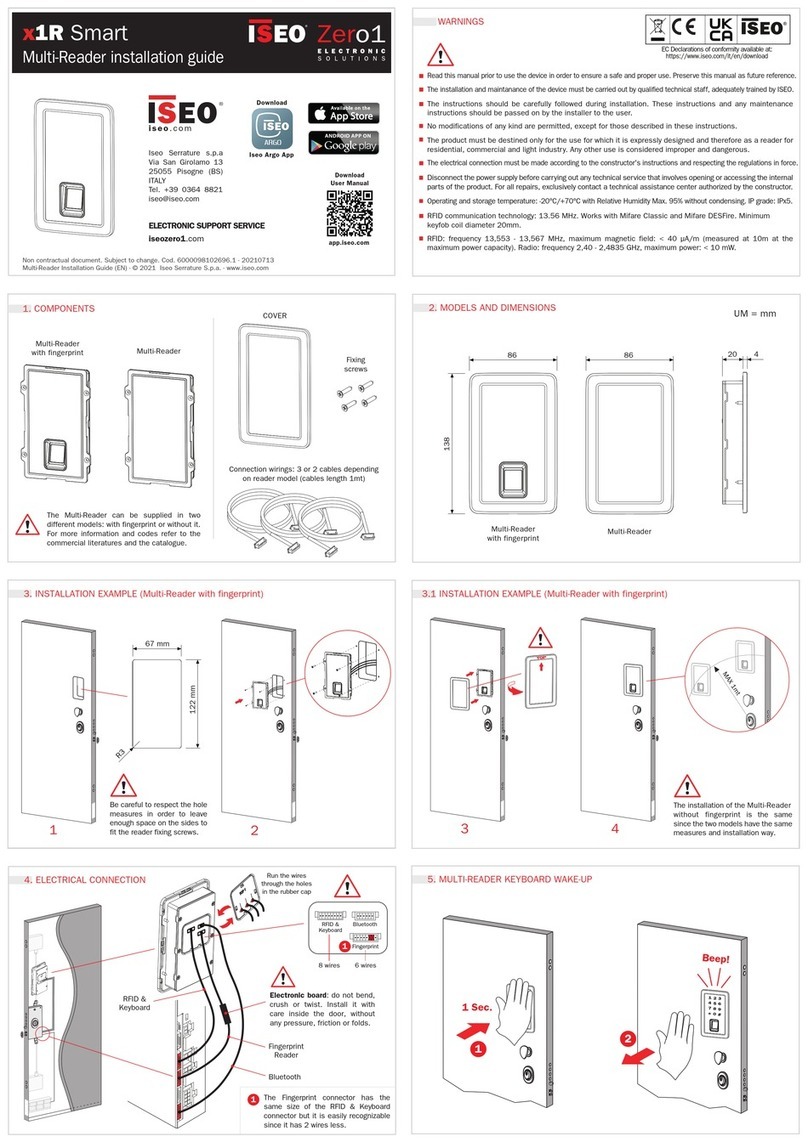Idemia VisionPass Instruction manual

All descriptions illustrations, and specifications in this brochure should be
considered approximate and may relate to optional equipment or feature
Quick User Guide
VisionPass

IDEMIA DOCUMENT –REPRODUCTION AND DISCLOSURE PROHIBITED
Product packaging checklist:
VisionPass box content
2
QTY
ITEM
1
VisionPass
terminal
1
Wall Mounting Plate
1
Documentation package
Electronic documentation is provided in Adobe®Acrobat®format (PDF). Adobe®Acrobat®Reader is available at http://www.adobe.com.
IDEMIA - 2019_2000045730 –V1

IDEMIA DOCUMENT –REPRODUCTION AND DISCLOSURE PROHIBITED
IDEMIA - 2019_2000045730 –V13
Regulatory, safety and environmental notices
Products bearing the CE marking comply with one or more of the following EU Directives as may be applicable:
•Radio Equipment Directive (RED) 2014/53/UE
•RoHS Directive 2011/65/EU.
Compliance with these directives is assessed using applicable European Harmonised Standards.
The installation of this product should be made by a qualified service Person and should comply with all local regulations.
It is strongly recommended to use a class II power supply at 12V-24V and 3 A min (at 12V) in conformity with Safety Electrical Low Voltage
(SELV). The AC power supply cable length should not exceed 10 meters.
This system must be installed in accordance with the National Electrical Code (NFPA 70), and the local authority having jurisdiction.
This product is intended to be installed with a power supply complying with IEC 60950-1 or IEC 62368-1 , in accordance with the NEC Class 2
requirements; or supplied by a listed IEC 60950-1or IEC 62368-1 external Power Unit marked Class 2, Limited Power source, or LPS and rated
12VDC, 3 A minimum or 24VDC, 1.5 A minimum.
In case of building-to-building connection it is recommended to connect 0V to ground. Ground cable must be connected with the terminal block
Power Ground.
Note that all connections of the VisionPass terminal described hereafter are of SELV (Safety Electrical Low Voltage) type.
This symbol means do not dispose of your product with your other household waste. Instead, you should protect human health and the environment
by handing over your waste equipment to a designated collection point for the recycling of waste electrical and electronic equipment.
This product is classified as Class 1 Laser Product according to IEC 60825-1 : 2014

IDEMIA DOCUMENT –REPRODUCTION AND DISCLOSURE PROHIBITED
Table of Contents
IDEMIA - 2019_2000045730 –V14
Color
Step
Content
One
Overview
Two
Wiring
Three
Communication
Four
SDAC (Single Door Access Control)
Five
Administration
Six
Software
Seven
Enrollment
Eight
Optional features

IDEMIA DOCUMENT –REPRODUCTION AND DISCLOSURE PROHIBITED
VisionPass provides an innovative and
effective solution for access control
applications using very fast acquisitions of
the face.
Product Overview
5
Step one : overview
Access control and Time & Attendance
Biometric authentication by face acquisition
Simple and ergonomic man-machine interface
Contactless card reader (MIFARE Classic, MIFARE
Plus, DESFire, HID® Iclass*, HID® PROX*)
Universal connectivity (Gigabit Ethernet, Wi-FiTM,
RS485/422, Wiegand, Dataclock)
Anti-tamper sensor
* Depending on product version
IDEMIA - 2019_2000045730 –V1
Speaker
Microphone
Contactless
card area
7’’ WVGA
touchscreen LCD
Optional Wifi
interface
Face sensors

IDEMIA DOCUMENT –REPRODUCTION AND DISCLOSURE PROHIBITED
Installation recommendations / environment
6
Step one : overview
IDEMIA - 2019_2000045730 –V1
If several devices are installed in parallel lanes
(typically for gates or turnstiles), then a minimum
distance of 80cm must be kept between the devices.
Alternately, devices can be tilted so that one device
field of view does not interfere with the other one.
1150 mm
Please install Visionpass terminal vertically at the recommended height, and keep the openings clear to allow air flow.
VisionPass is designed to operate in most environmental conditions. Anyway, to optimize VisionPass performance, it is
better to follow the rules below :
•Avoid sunlight coming directly on the device (for instance, avoid installing the device facing a window).
•Avoid direct sunlight on the user’s face.
•Avoid strong left/right or top/bottom contrast, and shadows on the user’s face due to lighting configuration.
•Prefer a neutral color background in the field-of-view of the product
•Avoid any bright spot light very close to the device (closer than 1 meter)
•Protect the front glass from raindrops as it might affect the sensors
NB : Caution : when operating, the internal radiator may be hot.
80 cm
min. Keep this area
clear and clean :
no sticker etc.

IDEMIA DOCUMENT –REPRODUCTION AND DISCLOSURE PROHIBITED
To secure an access, IDEMIA recommends installing the VisionPass terminal as a part of a typicalAccess Control system, which
consists of the components described below.
Terminal Implementation
7
Step one : overview
The VisionPass terminal
Its role is to process the access request from the user. It performs access right
checks using one-to-many biometric identification or one-to-one biometric
verification, and/or RF card authentication, and/or PIN check.
A Door Electric Latch or equivalent (3rd party product)
The Access Controller sends a command to activate the latch if the access is granted (i.e. if the individual's User ID is listed in the Controller
authorized user List). Control of the latch is made through a dry contact..
An Alarm (3rd party product)
The terminal sends a message to the Access Controller, to activate the Alarm as
soon as a malicious activity, such as tamper or pulling, is detected
An Access Controller (3rd party product)
The terminal interfaces with an Access Controller (using TCP/IP, Wiegand,
Data Clock, RS485 or RS422 protocol):
After access request, the terminal sends the result of user’s access rights to
the Access Controller (this message contains at least the User ID)
The Access Controller performs additional checks, and returns the final
decision (access granted/denied) to the terminal (which displays the result to
the user), and to the door controller which opens the door (if the access has
been granted).
B
MorphoWave Compact
Terminal
A
B
D
D
C
C
A
IDEMIA - 2019_2000045730 –V1

IDEMIA DOCUMENT –REPRODUCTION AND DISCLOSURE PROHIBITED
Typical Access Control Process
Note: One user must be enrolled in the terminal database, in order to be able to perform biometric check.
On Access Request,
the terminal checks
user’s access rights
using a biometric
check.
If the result of the
check is successful
(access granted), a
message is sent to
the Central Access
Controller for
additional access
rights check.
If the user is allowed
to access to the
protected zone, the
central access
controller returns an
"access granted"
message to the
terminal and a “open”
command to the gate
controller.
IDEMIA - 2019_2000045730 –V18

IDEMIA DOCUMENT –REPRODUCTION AND DISCLOSURE PROHIBITED
The terminal can be configured in one of the modes described in the table below
Access Control Modes
9
Identification
Authentication
Multifactor
Proxy
Access
control
a
pplication
Application that runs
on the terminal when
it starts.
Application that runs
on the terminal when
it starts.
Application that runs
on the terminal when
it starts.
Remote application
that controls the
terminal through
network commands
Access
control
triggering
event
A
user presents
his/her face to the
biometric sensor.
A user places
a
contactless
card in
front of
the reader. (*)
Both
Identification
and Authentication
triggers are enabled.
Triggering events are
selected
by the
remote application
Biometric
check (if
enabled)
The user’s captured
face is matched
against all faces in
the terminal
database.
The user’s captured
face
is matched
against its reference
face.
(**)
As per Identification
or Authentication,
depending on the
triggering event
Selected
by the
remote application
Decision
to
display
result
signal to user
By Identification
standalone
application or
controller feedback
By Authentication
standalone
application or
controller feedback
By
running
s
tandalone
application or
controller
feedback
By remote
application
(* ) or the user enter their Identifier on the keypad, or a Wiegand frame is received from an external device
(**) stored on the contactless card or in the user record in the terminal’s local database
Step one : overview
IDEMIA - 2019_2000045730 –V1

IDEMIA DOCUMENT –REPRODUCTION AND DISCLOSURE PROHIBITED
General precautions
Do not expose the terminal to extreme temperatures.
When the environment is very dry, avoid synthetic carpeting near the VisionPass terminal, to reduce the
risk of unwanted electrostatic discharge.
Areas containing combustibles
Do not install the terminal in the vicinity of gas stations or any other installation containing flammable or
combustible gases or materials. The terminal is not designed to be intrinsically safe.
The terminal should be installed in controlled lighting conditions
Avoid exposure of the biometric sensor to direct sunlight.
The terminal should be installed in controlled area in order to avoid water on the sensor
Deployment Environment
10
Operating temperature
-
10° to +45 °C (14°to 113°F)
Operating
humidity
10 % < RH < 80 % (non condensing)
Storage
temperature
-
25°to + 70 °C (-13°to 158°F)
Storage
humidity
5% < RH < 95 %
Step one : overview
IDEMIA - 2019_2000045730 –V1

IDEMIA DOCUMENT –REPRODUCTION AND DISCLOSURE PROHIBITED
VisionPassproposes 3 ways to guide the user to best position his / her face for identification.
User Guidance
11
Step one : overview
IDEMIA - 2019_2000045730 –V1
No User Guidance : terminal acquisition volume is large enough to
allow the user to be recognized easily as soon as he / she looks at it.
This way is adapted to daily users.
User Guidance Using Icons : intuitive icons indicate the user to
move back or closer, or move left or right.
User Guidance Using Camera : terminal will display a live feedback
of the camera

IDEMIA DOCUMENT –REPRODUCTION AND DISCLOSURE PROHIBITED
By default, VisionPass will react when a user enters in the intention area, and will start facial acquisition as soon as a
user enters in the coding area and looks at the terminal. Note that the video stream is never recorded by VisionPass.
Even if the video stream is not recorded by the terminal, it can be requested to disable the cameras when they are
not necessary, for privacy concerns.
VisionPass can be configured to enable the cameras on user request only :
Deliberate trigger
12
Step one : overview
IDEMIA - 2019_2000045730 –V1
Activate Camera
Enabled Per User
Request in the
Security settings :
To use the terminal, user has
to click on the icon
Note : cameras will be enabled
also by entering ID on keypad
or tap the smartcard if theses
triggers are enabled

IDEMIA DOCUMENT –REPRODUCTION AND DISCLOSURE PROHIBITED
Wiring Overview
13
Power supply from electrical source shall be switched off before starting the installation.
Before proceeding, make sure that the person in charge of installation and connections, is properly connected to
earth, in order to prevent Electrostatic Discharges (ESD).
All connections of the terminal are of SELV (Safety Electrical Low Voltage) type.
Step two : wiring
Backup of the Date/Time of the terminal: the volatile settings (such as date/time) of the terminal are protected against
power failure, by a dedicated component during a least 24 hours (at 25oC) without external power supply.
RJ-45 : Ethernet
1
ETH TX+
Orange / White
2
ETH TX
-
Orange
3
ETH RX+
Green / White
4
5
6
ETH RX
-
Green
7
8
Shell
ETH GND
Drain wire (no color)
Wiegand IN & Wiegand OUT
25
WIEGAND_LEDOUT1
Blue
28
WIEGAND_LEDOUT2
Blue / Red
23
WIEGAND_IN1
White / Red
24
WIEGAND_OUT0
Green
26
WIEGAND_OUT1
White
21
WIEGAND_IN0
Green / Red
27
WIEGAND_GND
Black / Red
RS-422 and 485
7
RS485_RX_A
Blue / Black
8
RS485_TX_Z
Green / White
9
RS
485_RX_B
Blue / White
10
RS
485_TX_Y
Green / Black
11
RS
485_GND
Black / Red
Power supply & Tamper switch
13
RLY_NC
Orange / White
14
RLY_NO
Yellow / White
12
RLY_COM
Grey / White
5
SWITCH_PIN1
Light Blue
6
SWITCH_PIN2
Pink
1,3
Power + 12V
Red
2,4
Power GND
Black
RJ45
GPIO
19
GPI2
Orange / Black
20
GPO2
Yellow
/ Red
17
GPI1
Orange / Red
18
GPO1
Yellow / Red
15
GPI0
Orange
16
GPO0
Yellow
22
GPIO_GND
Black
/ Red
IDEMIA - 2019_2000045730 –V1
Pin numbers shown in this document correspond
to the internal connector pinout in the product.
The connector attached to the cable is for test
only and should be removed for installation.

IDEMIA DOCUMENT –REPRODUCTION AND DISCLOSURE PROHIBITED
Power supply
14
External Power Supply: 12-24 V (regulated and filtered) 3A min @12V, IEC60950-1 or IEC 62368-1 standard
compliant. If sharing power between devices, each unit must receive 3A (e.g. two units would require a 12
VDC, 6A supply).
Step two : wiring
A battery backup or uninterrupted power supply (UPS) with built-in surge protection is recommended.
WARNING: Under powering may cause memory and data corruption; over powering may cause hardware damage.
Both of these situations will void the warranty
Gauge
AWG
Section
(mm2)
Maximum distance (meters) vs
power source rating
12 V +/-
10%
3,6 A
12 V +/-
5%
3,5 A
24 V +/-
10%
2 A
24 V +/-
10%
3 A
16 1.31 6 m 12 m 68 m121 m
18 0.82 4 m 8 m 43 m 76 m
20 0.52 2 m 5 m 27 m 48 m
22 0.32 1 m 3 m 16 m 30 m
IDEMIA recommends using a 24V 3Apower supply and
AWG16 gauge cable. The voltage measured on the product
block connector of the terminal must be equal to 12V-24V (-
15% / +10%).
The product requires 36 W at all voltage conditions.
The voltage drop due to the cable shall be taken into account.
The table at the right, shows the maximum distance between
power supply and 1 unique device, depending on cable gauge
and power supply rating.
IDEMIA - 2019_2000045730 –V1
1-3
Power + 12V
Red
2-4
Power GND
Black

IDEMIA DOCUMENT –REPRODUCTION AND DISCLOSURE PROHIBITED
RS-485 Communication
15
IMPORTANT:
A maximum of 31 devices may be installed on the same line.
The maximum total cable length is 1200m (4000 ft.)
The cable must be dedicated to this installation and not used for any other purpose
Step three : communications
RS-232
from the
Com Port
RS-232 to
RS-485
converter RS-485 to
1200m (4000ft)
For RS-485 installations, the cable should be run in a daisy-
chain configuration (i.e. converter > position 1 > position 2 >
position 3, etc.).
Use CAT-5 UTP (or better) cable (shielded recommended) with a characteristic impedance of 120 ohms.
AWG 24 should be the minimum wire gauge used.
Choose one twisted pair of conductors to use for RS485_TX_Y (TX+, Green / Black wire - 10) and RS485_TX_Z (TX-, Green
/ White wire - 8). Another conductor should be used for Signal Ground (Black / Red wire - 11).
Choose a RS-232 to RS-485 converter that supports Sense
Data to switch from Send to Receive mode.
IDEMIA - 2019_2000045730 –V1
8
RS485_TX_Z (
-)
Green / White
10
RS
485_TX_Y (+)
Green / Black
11
RS
485_GND
Black / Red

IDEMIA DOCUMENT –REPRODUCTION AND DISCLOSURE PROHIBITED
RS-422 Communication
16
Step three : communications
RS-232
from the
Com Port
RS-232 to
RS-422
converter RS-422 to
1200m (4000ft)
The maximum total cable length is 4000 ft. (1200m).
The cable must be dedicated to this installation and not used for any other purpose
For RS-422 installations, the cable should be run in a point to
point configuration (i.e. PC > converter > terminal)
Use CAT-5 UTP (or better) cable (shielded recommended)
with a impedance of 120 . AWG 24 should be the minimum
wire gauge used.
Choose one twisted pair of conductors to use for RS485_TX_Y (TX+, Green / Black wire - 10) and RS485_TX_Z (TX-, Green
/ White wire - 8).
Choose one twisted pair of conductors to use for RS485_RX_A(RX+, Blue / Black wire - 7) and RS485_RX_B (RX-, Blue /
White wire - 9).
Another conductor should be used for Signal Ground (Black / Red wire - 11).
IDEMIA - 2019_2000045730 –V1
7
RS485_RX_A(RX+)
Blue / Black
8
RS485_TX_Z (TX
-)
Green / White
9
RS
485_RX_B (RX-)
Blue / White
10
RS
485_TX_Y (TX+)
Green / Black
11
RS
485_GND
Black / Red

IDEMIA DOCUMENT –REPRODUCTION AND DISCLOSURE PROHIBITED
Ethernet and Wireless LAN
17
1
ETH TX+
Orange / White
2
ETH TX
-
Orange
3
ETH RX+
Green / White
4
5
6
ETH RX
-
Green
7
8
Shell
ETH GND
Drain wire (no color)
Step three : communications
RJ45
LAN Ethernet
Management
station
Wireless
WLAN option
IDEMIA wireless enabled
devices support 802.11b and
802.11g standards. WEP
Open, WPA and WPA2 are
supported.
Use a category 6 shielding cable (120 Ohms) or better. It is strongly recommended
to insert a repeater unit every 90 m.
Static mode is enabled by default on VisionPass terminals (factory setting) :
IP=192.168.1.10, Gateway=192.168.1.254, Mask= 255.255.254.0
Terminal Block Ethernet connection
Extreme care must be taken while connecting Ethernet wire to the block board
since low quality connection may strongly impact Ethernet signal sensibility.
Connect Rx+ and Rx- with the same twisted-pair wire (and do the same with
Tx+/Tx- and the other twisted-pair wire).
IDEMIA - 2019_2000045730 –V1

IDEMIA DOCUMENT –REPRODUCTION AND DISCLOSURE PROHIBITED
Wiegand Communication
18
Step three : communications
Three-conductor cable (shielded recommended) is required for Data 0, Data 1, and WGND.
Use 18-22AWG cable in a homerun configuration from each unit to theAccess Control Panel (ACP).
Connect WIEGAND_OUT0 (Green wire –Pin 24) to ACP Data 0,
Connect WIEGAND_OUT1 (White wire –Pin 26) to ACP Data 1,
Connect WIEGAND_GND (Black / Read wire –Pin 27) to ACP reader common (0vDC).
For 18 AWG, the maximum cable distance is (150m) 500 ft. ; for 20 AWG, the maximum is 90m (300 ft.) ; for 22
AWG, the maximum is 60m (200 ft.)
All controller output shall be open drain or 5 V +/- 5%
IDEMIA - 2019_2000045730 –V1
25
WIEGAND_LEDOUT1
Blue
28
WIEGAND_LEDOUT2
Blue / Red
23
WIEGAND_IN1
White / Red
24
WIEGAND_OUT0
Green
26
WIEGAND_OUT1
White
21
WIEGAND_IN0
Green / Red
27
WIEGAND_GND
Black / Red
16
GPO0
Yellow
Wiegand Out
Wiegand In
LED
Out
LED In

IDEMIA DOCUMENT –REPRODUCTION AND DISCLOSURE PROHIBITED
Wiegand Communication (continued)
19
Step three : communications
Important
By default, the Wiegand output format is not enabled. Wiegand
output must be configured before connecting to the ACP.
Note
On installation, the system administrator will be prompted to
select either a pre-existing Wiegand frame format or create a
custom format, and upload it to the unit before the first use.
Data Clock
The Wiegand port also supports the Clock & Data protocol.
The wiring is described below.
Example Format Information
Type: Standard 26-bit
Alt Site Code and Fail Site Code Range: 0-255
Template ID Number Range: 1-65535
Extended ID Number Range: N/A
ID Start Bit: 9
Length of ID: 16
Site Code Start bit: 1
Length of Site Code: 8
Start Bit length : 0
IDEMIA - 2019_2000045730 –V1
25
WIEGAND_LEDOUT1
Blue
28
WIEGAND_LEDOUT2
Blue / Red
23
WIEGAND_IN1
White / Red
24
WIEGAND_OUT0
Green
26
WIEGAND_OUT1
White
21
WIEGAND_IN0
Green / Red
27
WIEGAND_GND
Black / Red
16
GPO0
Yellow
Data Clock Out
Data Clock In
LED
Out
Card present
(Legacy Morpho Mode)
Data
Clock
Clock
Data

IDEMIA DOCUMENT –REPRODUCTION AND DISCLOSURE PROHIBITED
Single Door Access Control (SDAC)
20
If door contact is not used, GPI1 (17) and GPO1 (18) shall be connected together
Single Door Access Control (SDAC) wiring sample : with Push Button
Step four: SDAC
Power supply from electrical source shall be switched off before starting the installation.
IDEMIA - 2019_2000045730 –V1
13
RLY_NC
Orange / White
14
RLY_NO
Yellow / White
12
RLY_COM
Grey / White
17
GPI1
Orange / Red
18
GPO1
Yellow / Red
15
GPI0
Orange
16
GPO0
Yellow
Power
supply
Deadbolt / Door strike
Door contact
Power
supply
Push Button
See details on next page
for relay connection
Other manuals for VisionPass
1
Table of contents
Other Idemia IP Access Controllers manuals
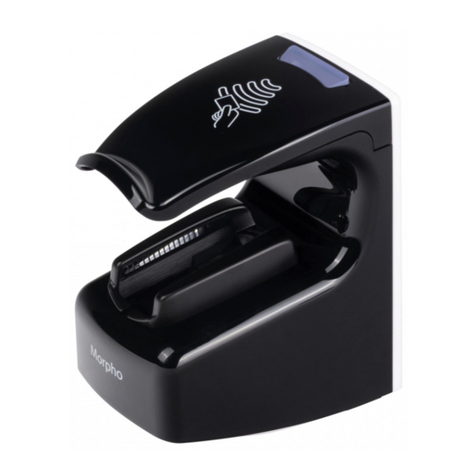
Idemia
Idemia MorphoAccess VP MD Instruction manual
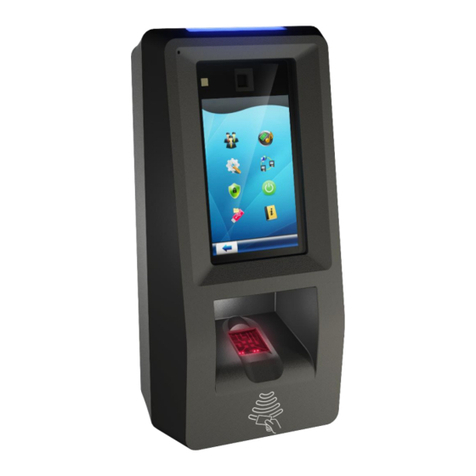
Idemia
Idemia MorphoAccess SIGMA Extreme Series Instruction manual
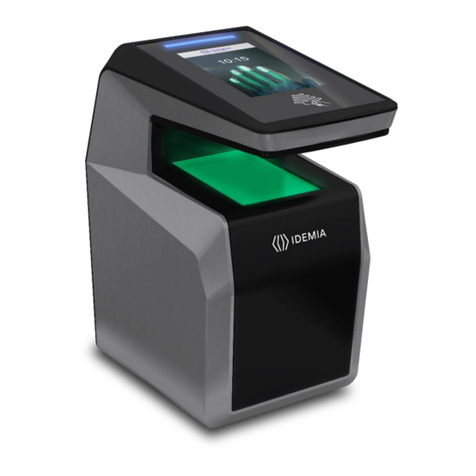
Idemia
Idemia MorphoWave Compact Instruction manual
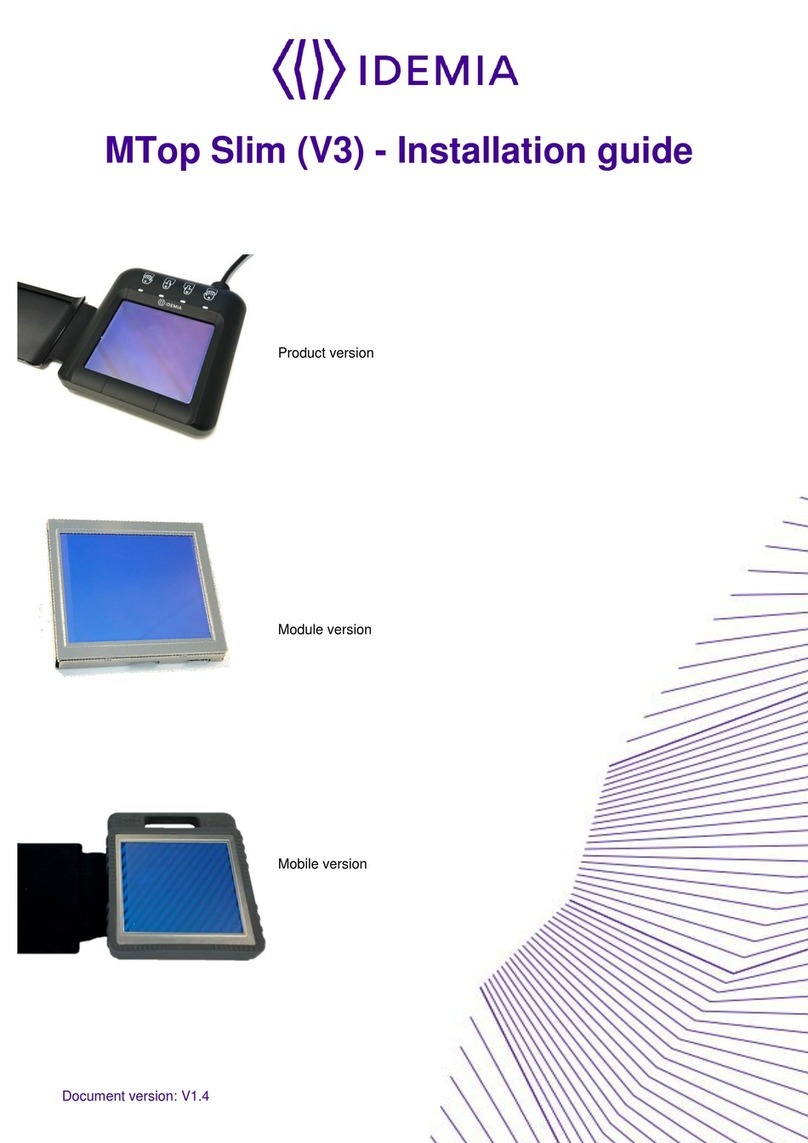
Idemia
Idemia MTop Slim V3 User manual
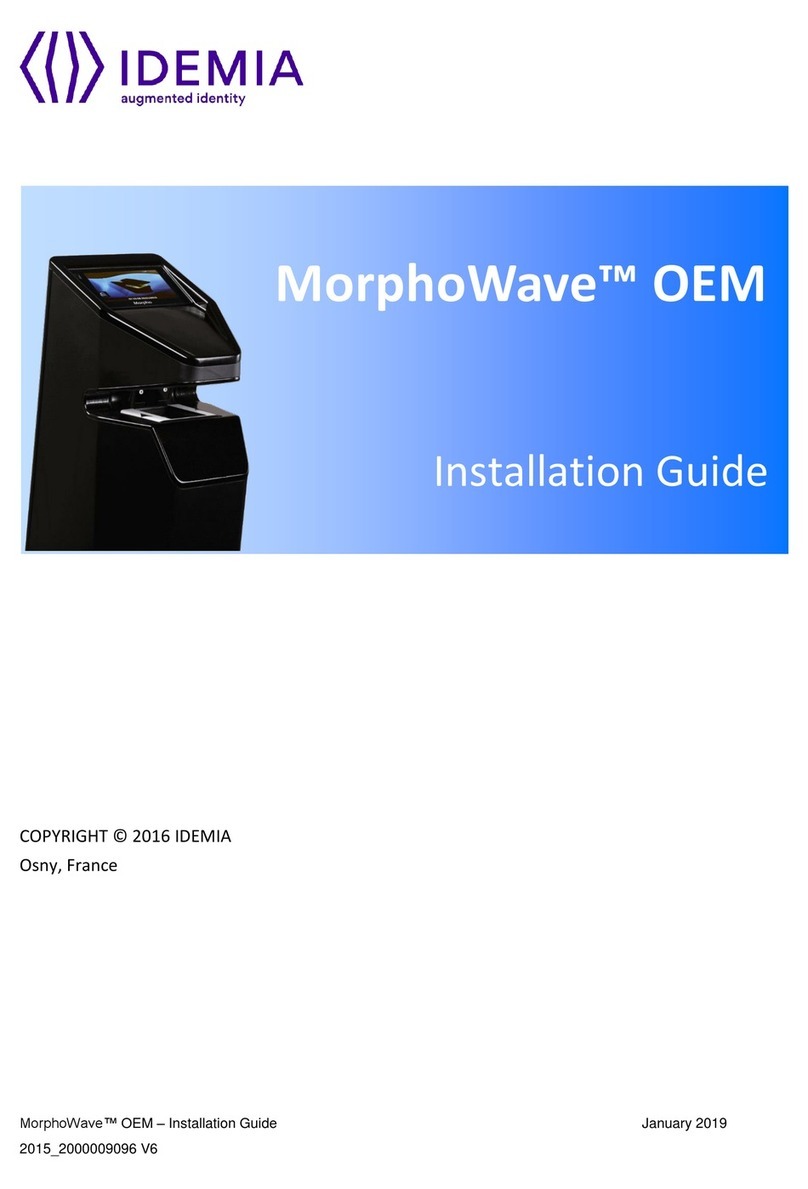
Idemia
Idemia MorphoWave OEM User manual

Idemia
Idemia MorphoWave Compact User manual
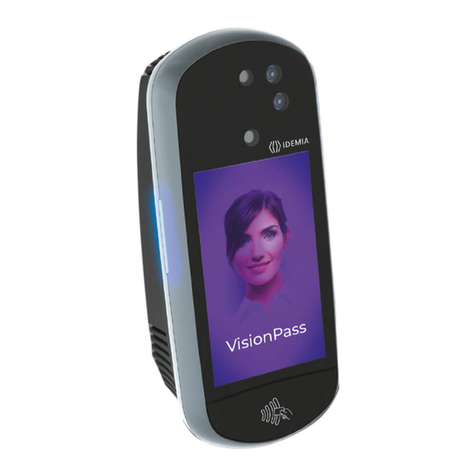
Idemia
Idemia VisionPass User manual
Popular IP Access Controllers manuals by other brands
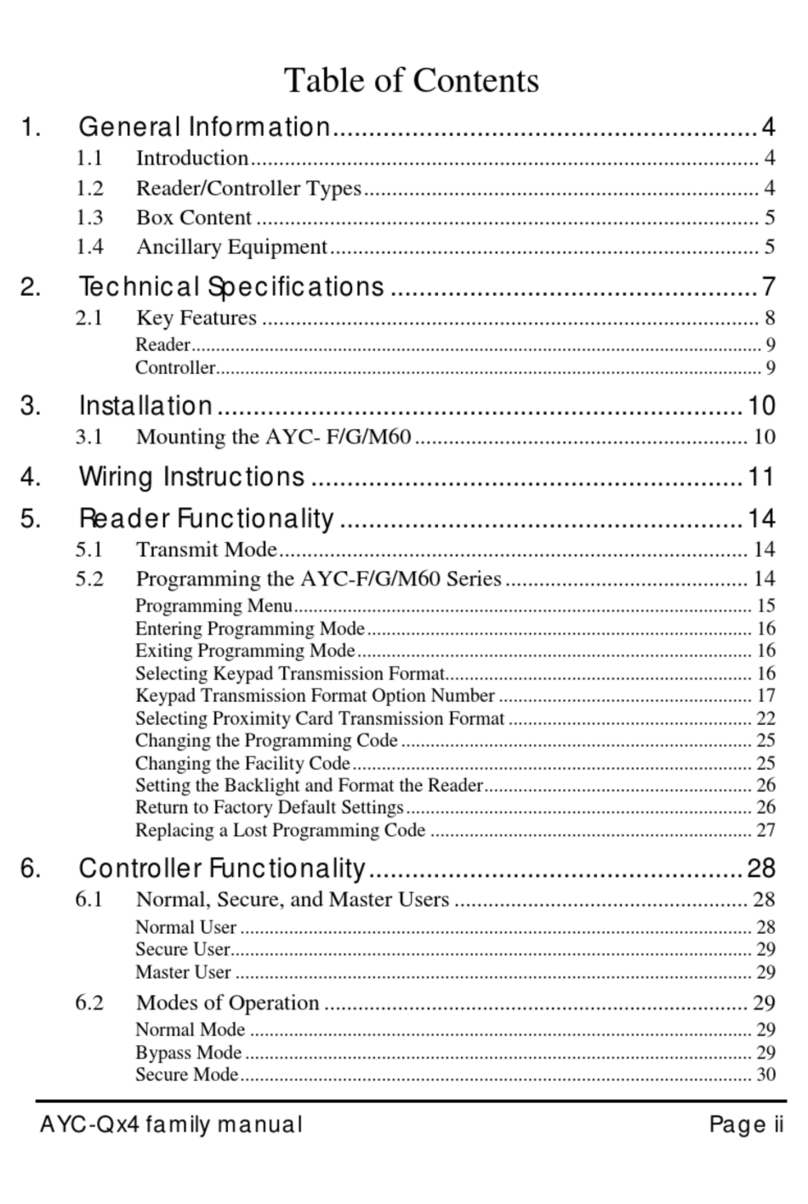
Rosslare
Rosslare AYC-Q4 Series manual
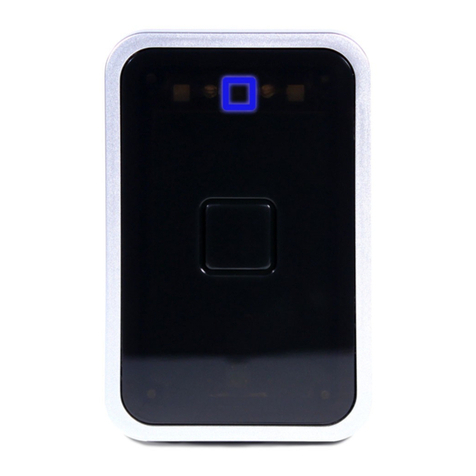
Kaba
Kaba RAC 4 installation guide
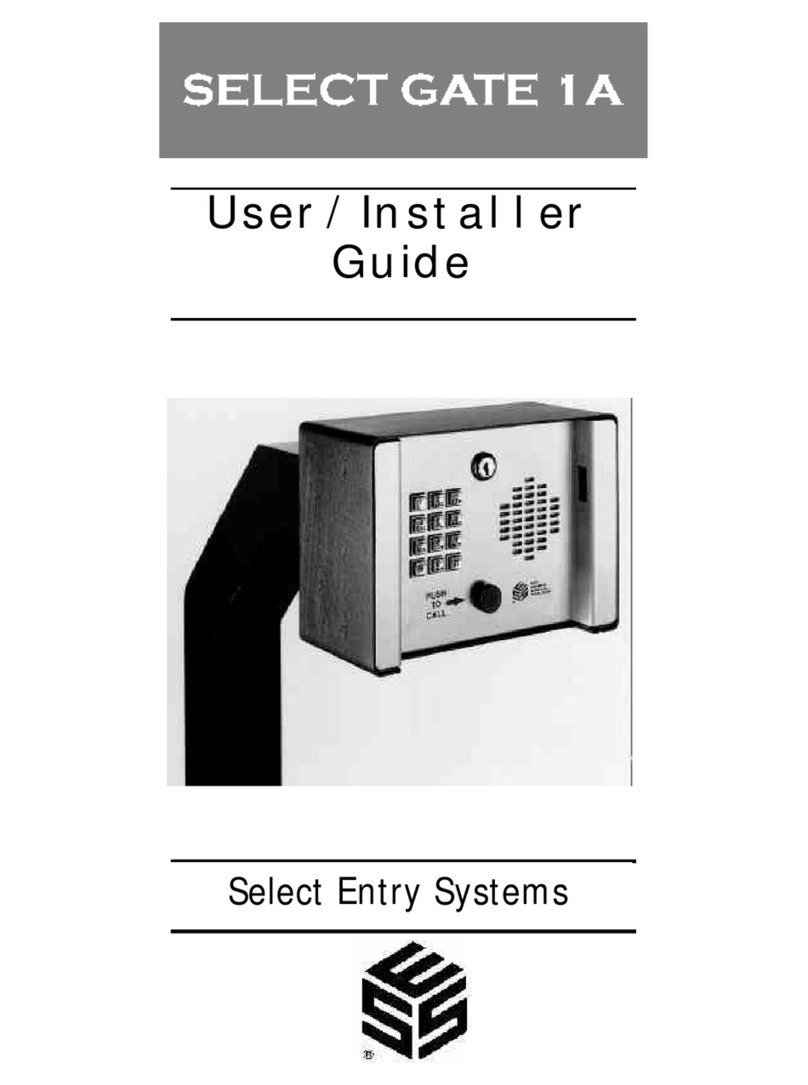
Select Engineered Systems
Select Engineered Systems Select Gate 1A User/installer guide
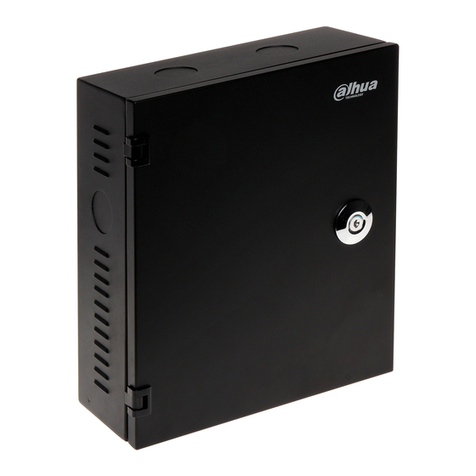
Dahua
Dahua DHI-ASC1202C user manual

Edge-Core
Edge-Core EWS4502 installation guide
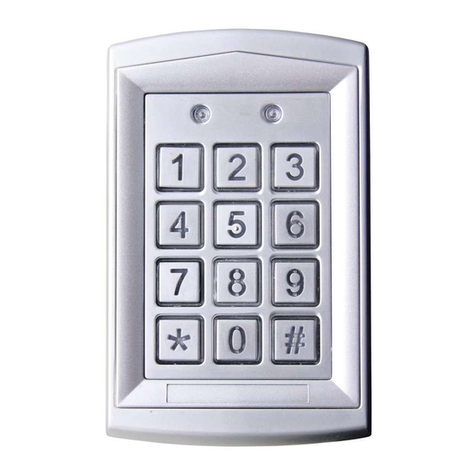
Competition Electronics
Competition Electronics DH16A-10DT-B instruction manual
